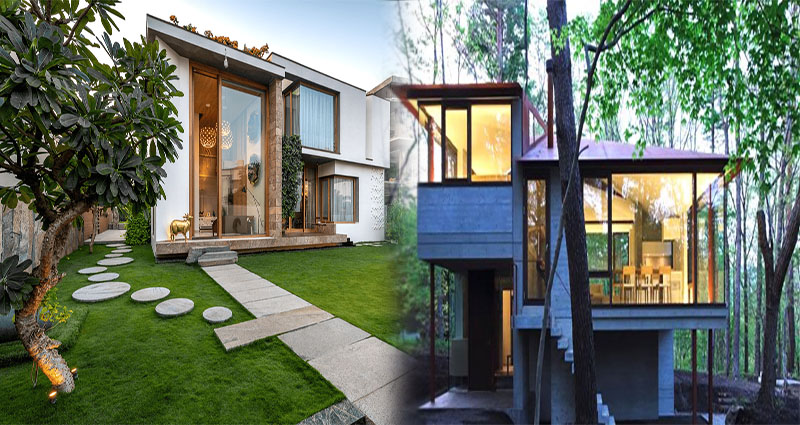In a world increasingly concerned about environmental conservation and sustainability, the design and construction of homes have evolved to embrace eco-friendly principles. Sustainable contemporary home architecture combines the elegance and functionality of modern design with the use of materials that have a minimal impact on the environment. In this article, we will explore the concept of sustainable contemporary home architecture and highlight the importance of using eco-friendly materials.
Sustainable Design Principles
Sustainable contemporary home architecture focuses on integrating environmentally friendly solutions into every aspect of the design and construction process. Some key principles include:
1. Energy Efficiency
Energy-efficient design is a core aspect of sustainable architecture. It involves optimizing the building’s orientation, insulation, and ventilation, as well as incorporating energy-saving technologies like solar panels, energy-efficient appliances, and LED lighting. By reducing energy consumption, these homes help minimize greenhouse gas emissions and reduce the strain on natural resources.
2. Use of Recycled and Reclaimed Materials
Using recycled and reclaimed materials is an effective way to reduce waste and minimize the extraction of new resources. Many sustainable contemporary homes incorporate materials like reclaimed wood, recycled metal, and salvaged stone in their construction. This not only adds a unique character to the home but also reduces the overall environmental footprint.
3. Water Conservation
Sustainable home architecture emphasizes water conservation by implementing features such as rainwater harvesting systems, low-flow fixtures, and gray water recycling systems. These measures help reduce water consumption and preserve this precious resource.
4. Natural Ventilation and Daylighting
Designing homes that take advantage of natural ventilation and daylighting reduces the need for artificial lighting and air conditioning. Strategically placed windows, skylights, and light shelves allow for effective natural lighting while promoting air circulation. This not only saves energy but also creates a healthier and more comfortable living environment.
Eco-Friendly Materials
Choosing eco-friendly materials is a crucial aspect of sustainable contemporary home architecture. Here are some examples of such materials:
1. Bamboo
Bamboo is a fast-growing and renewable resource that can be used for various purposes, such as flooring, wall panels, and furniture. It is durable, aesthetically pleasing, and has a smaller carbon footprint compared to traditional hardwood materials.
2. Recycled Metal
Using recycled metal, such as reclaimed steel or aluminum, reduces the energy-intensive production of new metals. Recycled metal can be utilized for structural elements, roofing, or decorative features, providing strength and durability while minimizing environmental impact.
3. Insulated Concrete Forms (ICFs)
ICFs are a sustainable alternative to traditional concrete construction. These forms consist of insulating foam, often made from recycled materials, which is filled with concrete. They provide excellent thermal insulation and energy efficiency while reducing the amount of concrete required.
4. Natural and Non-Toxic Insulation
Choosing natural and non-toxic insulation materials, such as cork, hemp, or recycled denim, is not only environmentally friendly but also promotes healthier indoor air quality. These materials are renewable, biodegradable, and often have superior insulation properties.
Benefits of Sustainable Contemporary Home Architecture
Building sustainable contemporary homes using eco-friendly materials offers numerous benefits, including:
- Reduced environmental impact and resource depletion
- Lower energy consumption and utility bills
- Improved indoor air quality and occupant health
- Enhanced comfort and livability
- Increased property value and market appeal
- Contribution to a more sustainable future
Sustainable contemporary home architecture with the use of eco-friendly materials is a powerful approach to reducing environmental impact and promoting a more sustainable way of living. By embracing energy-efficient design principles and incorporating materials that minimize resource consumption and waste, these homes offer a harmonious blend of modern aesthetics and environmental responsibility. Whether you are designing your dream home or renovating an existing one, consider the benefits of sustainable architecture and the positive impact it can have on the planet and your well-being.








